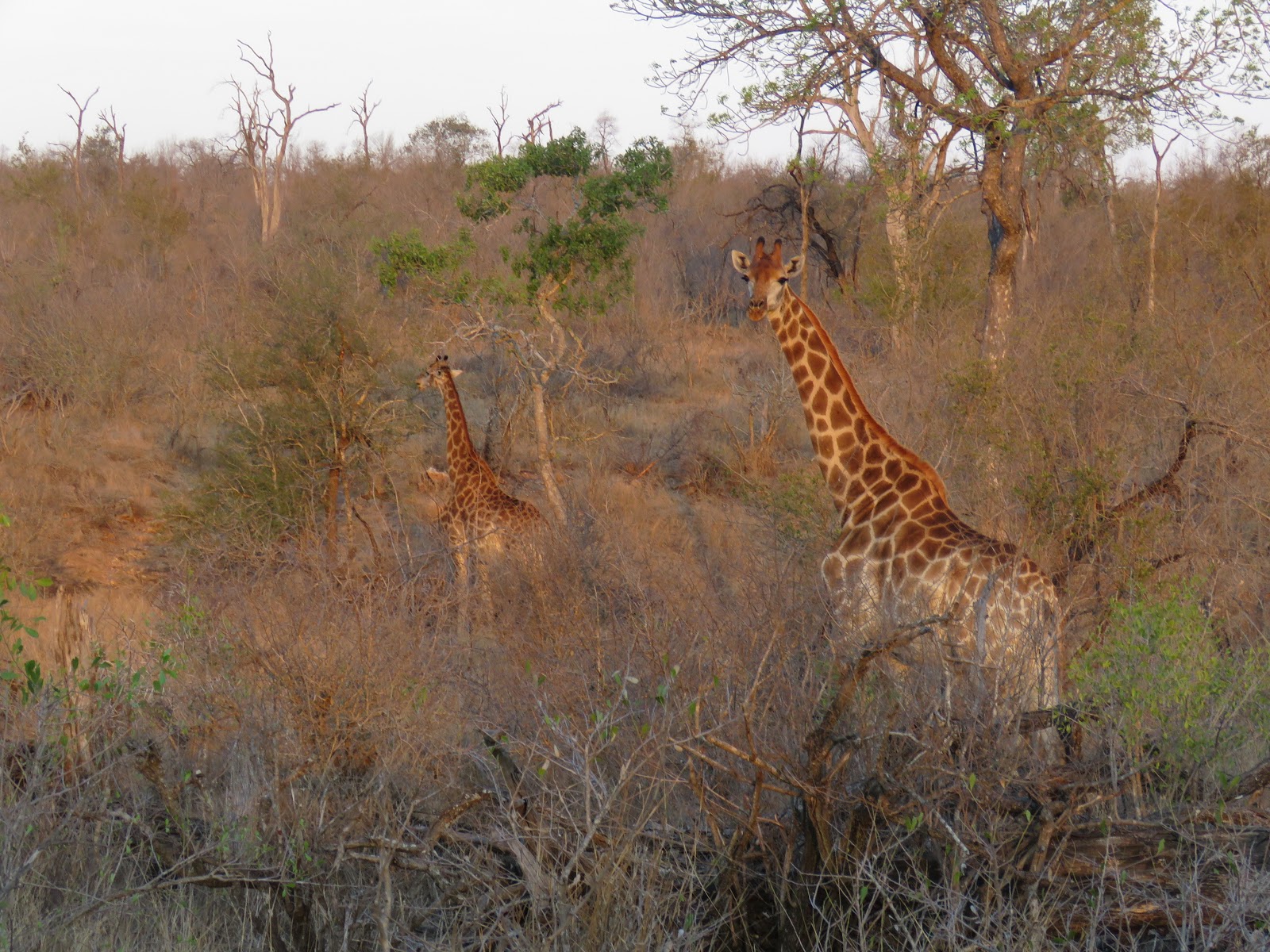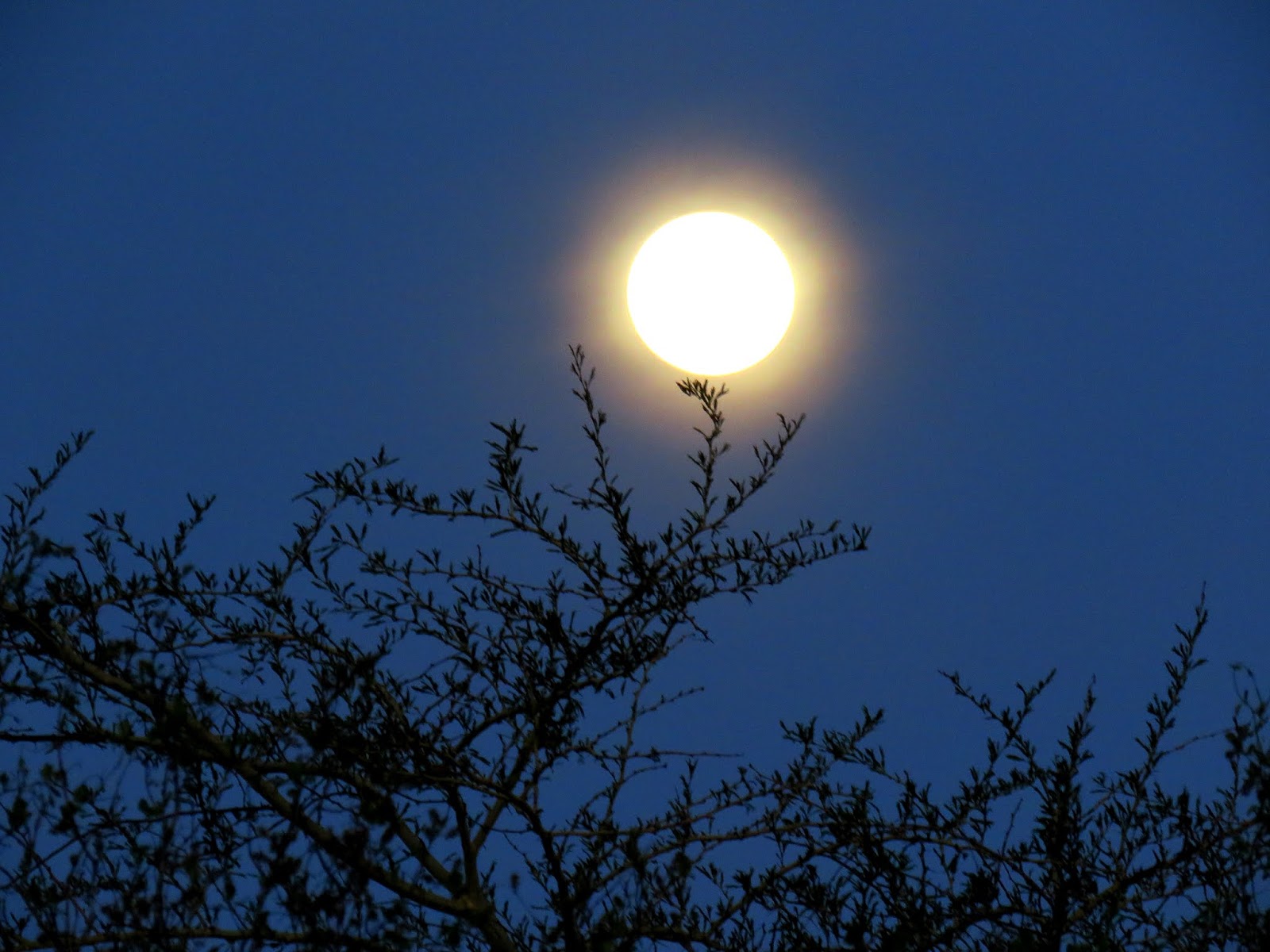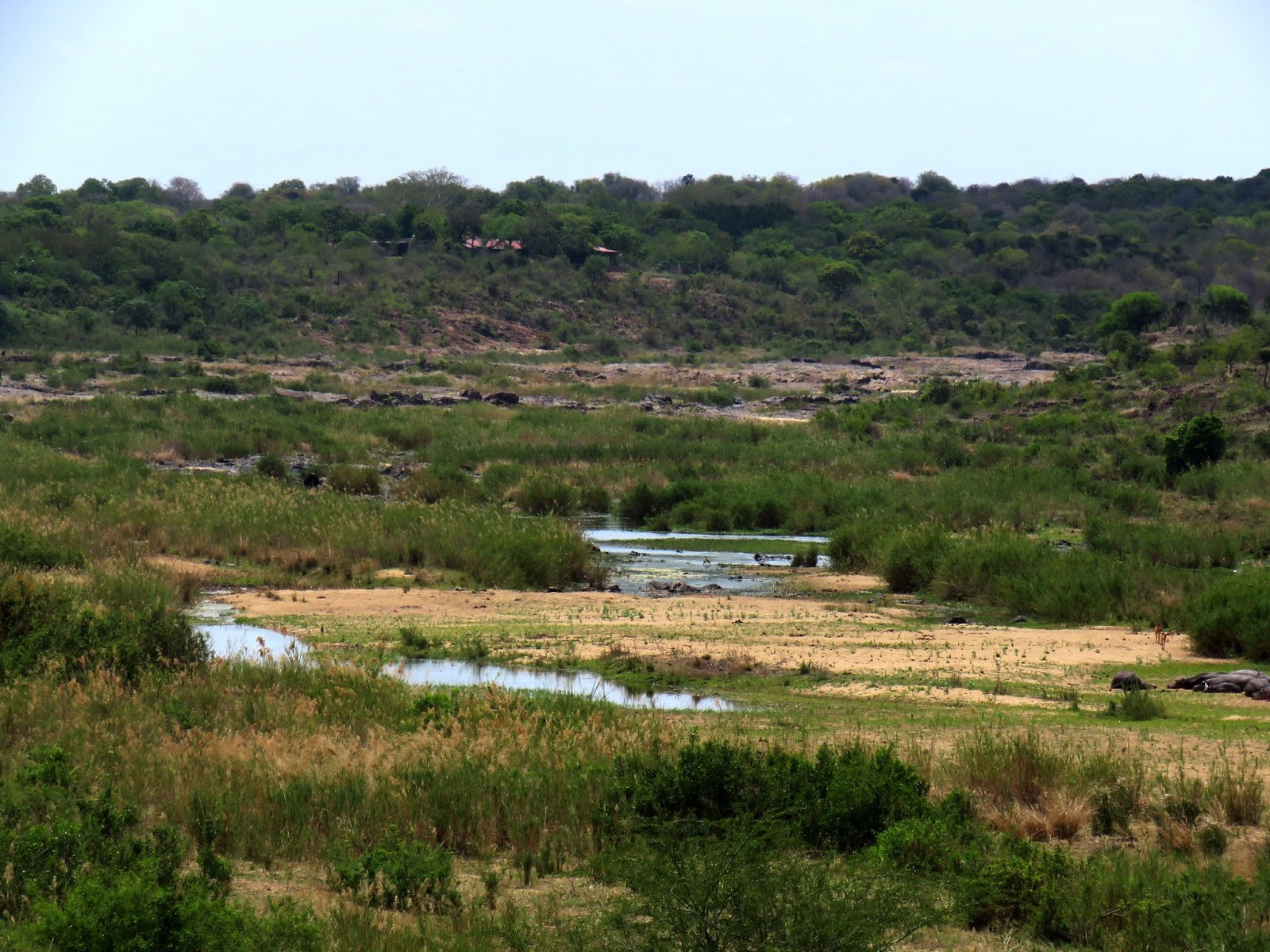 |
| Giraffes in the bush. |
“Sighting of the Day in the Bush”
 |
| An orange-breasted roller. |
Today, October 31, 2018, is the sixth anniversary of our traveling the world. Tonight, we’ll celebrate this momentous day for us with Tom and Lois at Jabula Lodge and Restaurant on their final evening in South Africa.
 |
| The Crocodile River from inside Kruger National Park. |
Most years, we’ve included many anniversary photos and points of interest in our travels as we celebrate this special day. Today will be different since the past few days have been a series of fun activities we’d like to present as we wind down our time with our friends.
 |
| A mom and baby elephant. |
 |
| Elephant on the side of the dirt road. |
 |
| Sunset last night in Kruger. |
 |
| Another incredible elephant sighting with one tusk missing. |
 |
| A bateleur vulture against the sky at sunset. |
 |
| Another stunning view of the Crocodile River at dusk. |
 |
| A hyena we spotted in the dark in Kruger. |
Our 1500 hrs (3:00 pm) pickup worked well for us, and off we went, cameras, repellent, and enthusiasm in hand, prepared for some exciting adventures. Unfortunately, it was a sweltering afternoon with temps in high 30C’s (mid 90F’s), and most animals remained undercover during the heat of the afternoon sun.
 |
| An adorable bush hare. |
Photo from one year ago today, October 31, 2017:
 |
| October 31, 2017, was our fifth anniversary of traveling the world, taken on the veranda at the villa in Atenas, Costa Rica. For more anniversary photos, please click here. |



















































































































